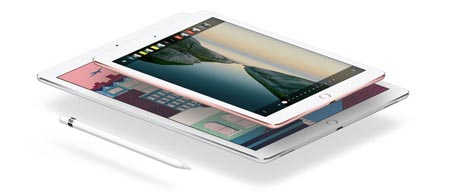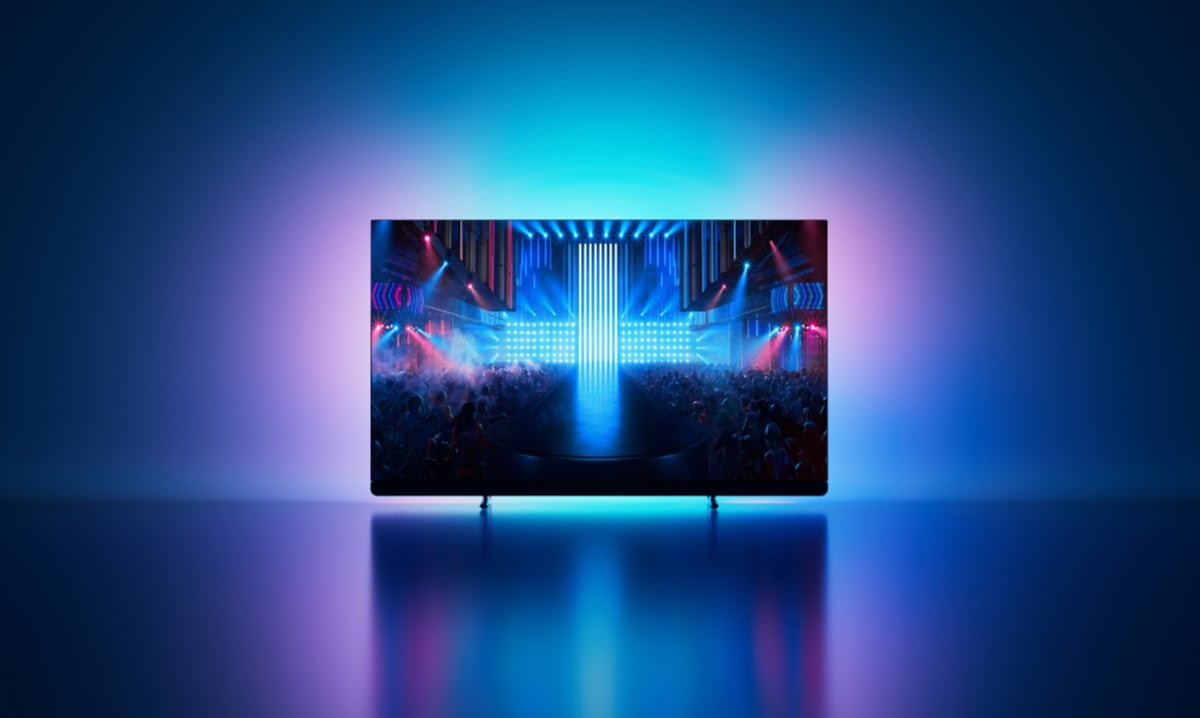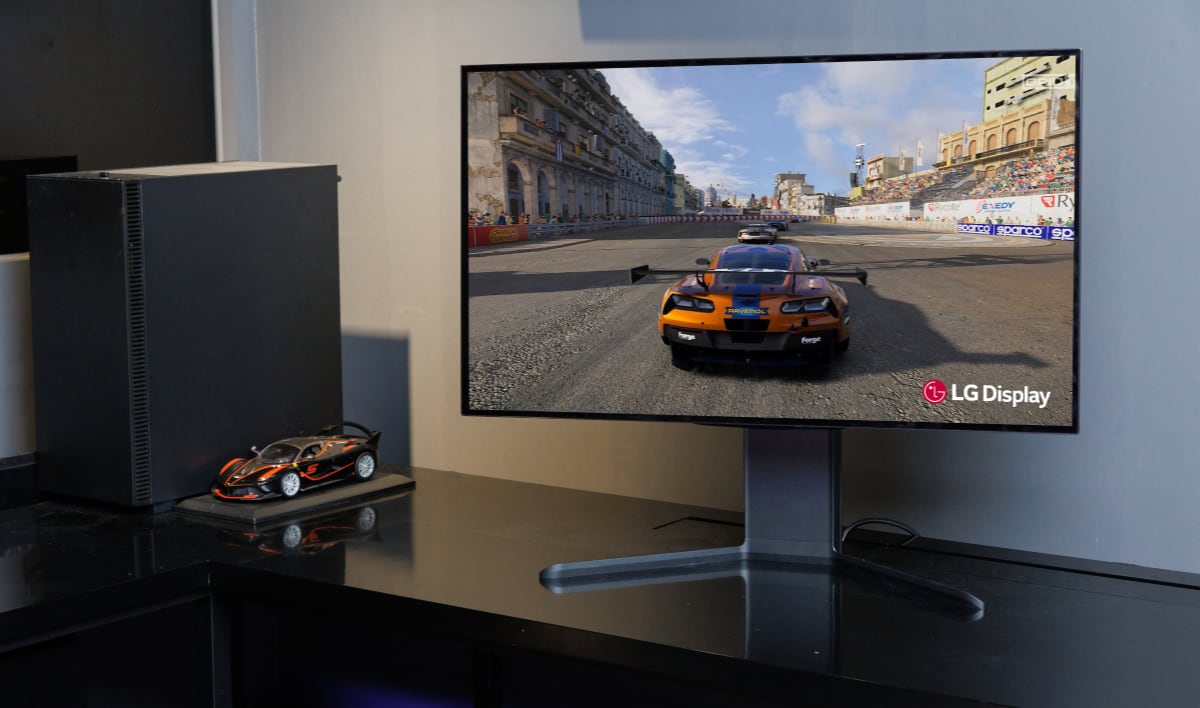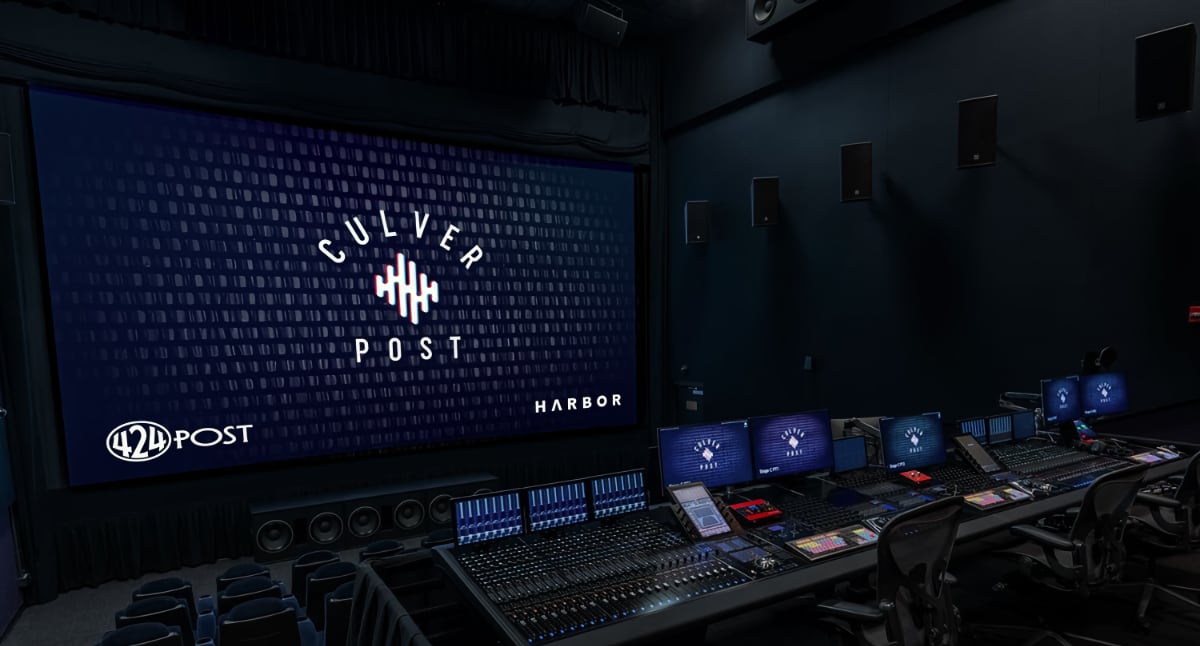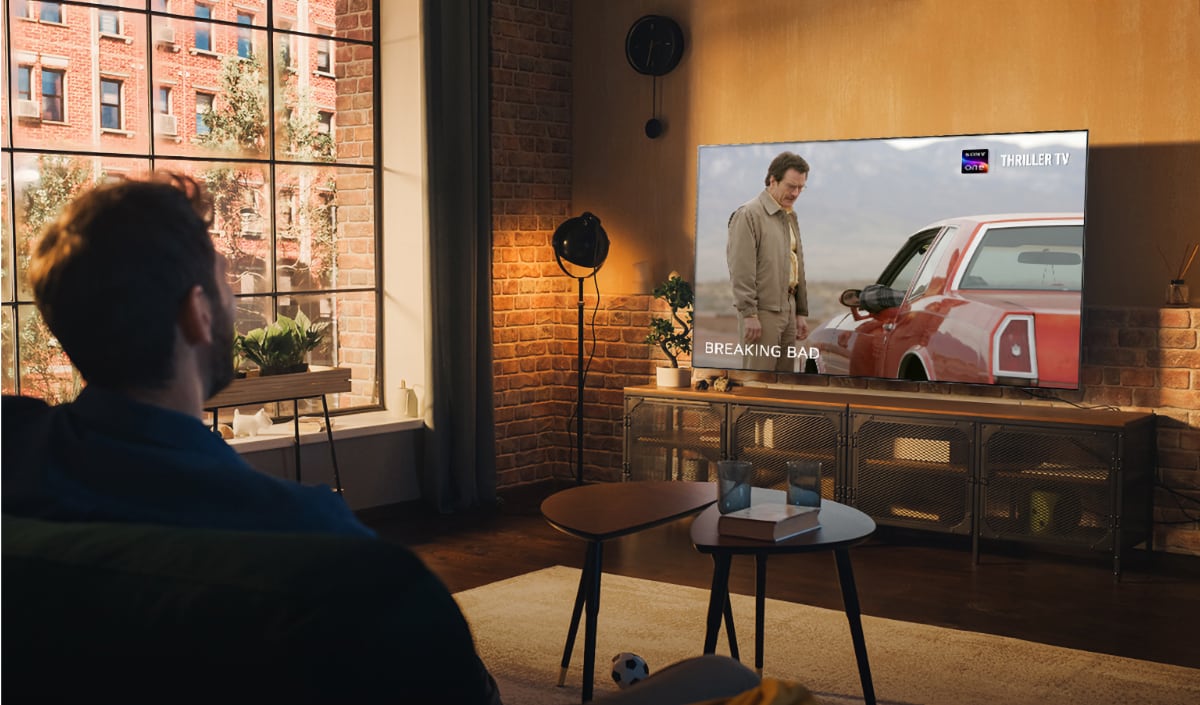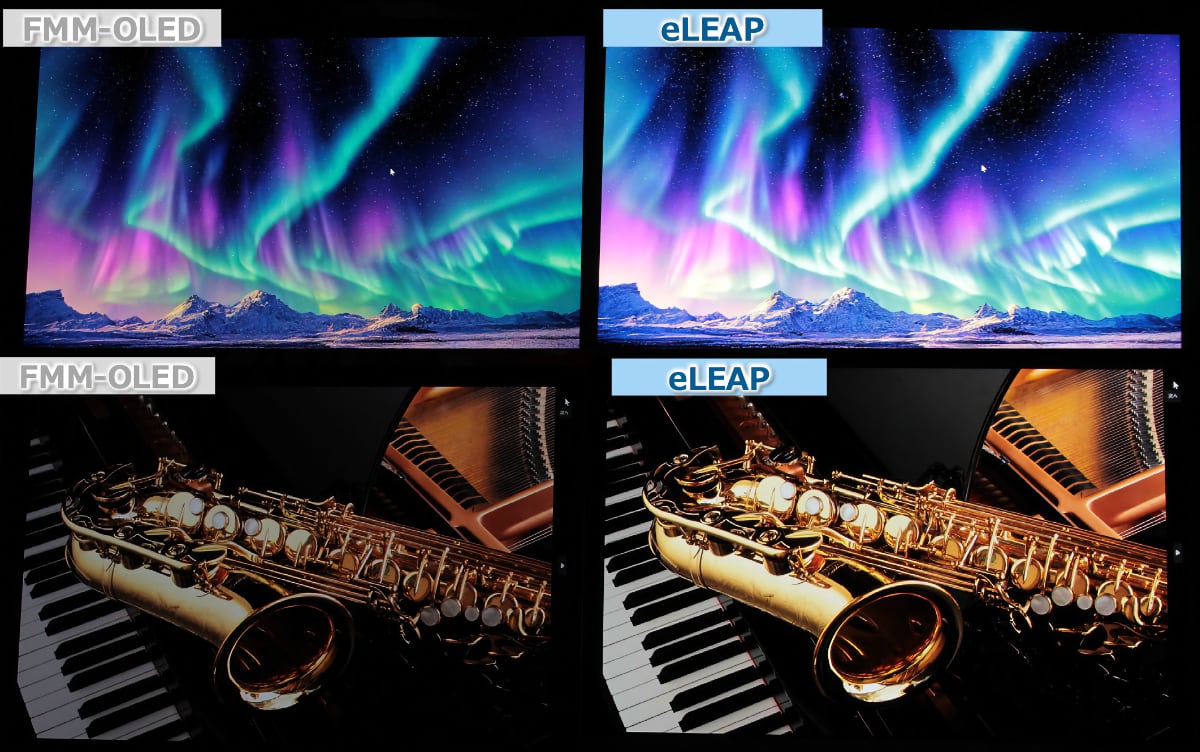The new, smaller iPad Pro looks a lot like its bigger brother but the display incorporates several new technologies. Apple is moving on from the aging sRGB color space to the larger DCI-P3, which is used in Hollywood. A new "True Tone" feature automatically adjusts color temperature to match the environment.
iPad Pro with DCI-P3 color gamut
There was no new iPad Air. Instead, Apple expanded the iPad Pro family and if the A9X processor does not convince you of its “Pro” moniker, the upgraded display probably should.
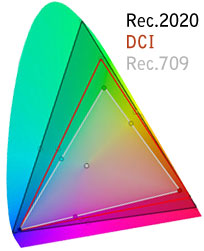
DCI-P3 covers 25% more colors than sRGB
The main difference is that the new display jumps from a sRGB color gamut to a wide color gamut. Specifically, the DCI-P3 (Digital Cinema Initiative) color gamut developed by Hollywood and used in the cinema, (and on UHD Blu-ray discs).
DCI-P3 covers 25% more colors than sRGB, especially at the red and green primaries. In practice this means that the display is capable of reproducing for example Coca Cola red and in general just more of the colors that the human eye can perceive. DCI-P3 support is important for professionals working with video editing.
It is worth noting that PC monitors with support for DCI-P3 often cost more than $1000.
Apple recently introduced DCI-P3 support in its iMacs and is starting to incorporate it into every link of the chain. TV manufacturers also started moving to DCI-P3 last year. The next step, as illustrated in the graph, is Rec.2020, which is the industry’s goal value for year 2020.
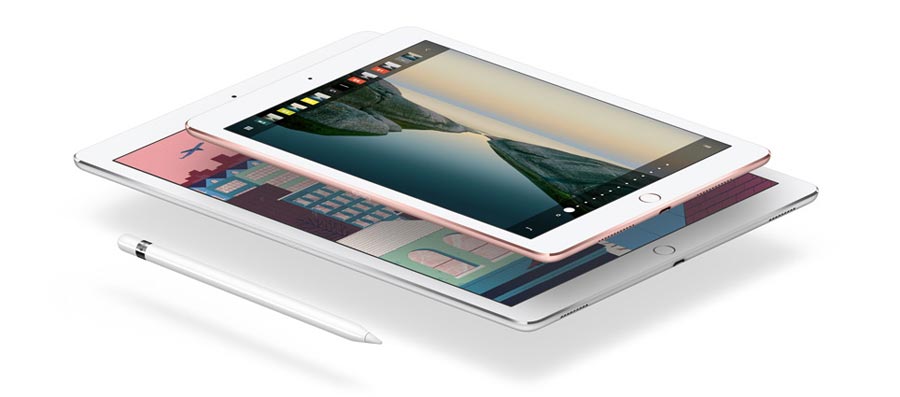
True Tone and less reflections
Another new feature in iPad Pro is the so-called “True Tone” feature. It allows the screen to dynamically adapt to the environment by changing the screen’s color temperature and brightness level.
To understand the advantage, think of how the human eye adjusts to its environment. The pupil contracts in daytime and widens in night time to let in more light. The human eye also changes the perception of colors based on the environment. It is this behavior that the “True Tone” technology tries to mimic in iPad Pro.
So, typically in the evening your living room is illuminated with low-temperature (yellowish or reddish) lighting. The screen should react accordingly and adjust its color temperature and brightness level. Apple uses "four-channel ambient light sensors" to measure the environment and adjust the screen. iPad Pro also supports the “Night Shift” feature introduced in iOS 9.3.

The same technology is used in some high-end TV, including the Bang & Olufsen BeoVision Avant.
Apple says that the screen has the ”lowest reflectivity of any tablet”. It reflects "40% less light" than the iPad Air 2. It is also "25% brighter" than the iPad Air 2 and is capable of outputting up to 500 nits of brightness. Combined, these factors should make the iPad Pro better suited for outdoor use.
Apple has yet to adopt OLED display technology but rumors suggest that it will gradually move to OLED in either 2017 or 2018. OLED can contribute to even better picture quality but it is important to keep in mind that the technology that Apple has introduced in iPad Pro can also be used in OLED displays to ensure the best possible picture quality.
GPU that could benefit Apple TV
iPad Pro uses the A9X chip, which is Apple's most advanced mobile processor at the moment. The company recently launched the new Apple TV with the less powerful A8 chip. It is unclear why Apple decided to pass on the A9 and A9X chip for the living room screen.
˝ teraflops in graphics performance
PS4 and Xbox One deliver between 1.3 and 1.8 teraflops.
So why has Apple not opted to use the same processor in the Apple TV? It likely has to do with timing but if nothing else you can look forward to much more punch in future Apple TVs. Within a few years from now boxes like Apple TV and Nvidia Shield should be able to match dedicated game consoles in graphics performance.
The new iPad Pro will be available on March 31, starting at $599.

